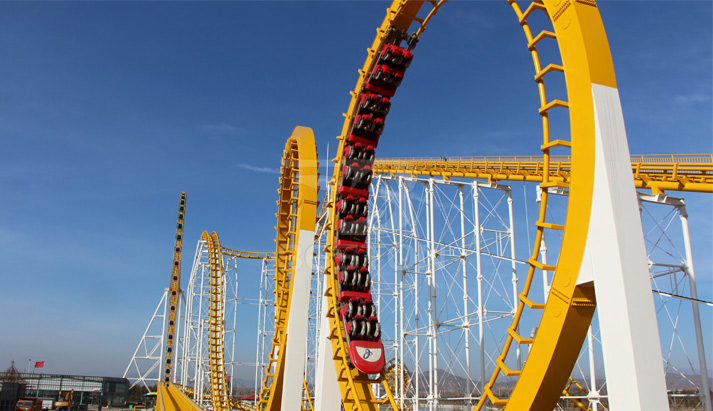When choosing amusement rides for a theme park, it’s crucial to consider various factors to create an appealing and well-rounded experience for visitors. Here are three key factors to prioritize:
Target Audience and Demographics:
Understanding your theme park’s target audience and their demographics is paramount when selecting amusement rides. Different age groups and interests require distinct types of attractions. Consider the following aspects:
Age Groups: Identify the primary age groups your theme park aims to attract. For example, a park targeting families with young children will require a variety of kiddie rides, while a park catering to teenagers and thrill-seekers will need high-intensity rides.

Interests: Analyze the interests of your target audience. Are they more inclined toward thrilling experiences, water attractions, or family-friendly rides? Tailor your ride selection to align with these interests.
Cultural Preferences: Consider the cultural background of your audience. Certain themes or ride experiences may resonate more with specific cultural groups. Ensure that your ride choices are culturally sensitive and appealing.
By aligning your ride selection with your target audience’s preferences and demographics, you can create a theme park experience that resonates with visitors with different types of theme park equipment for sale and encourages repeat visits.
Ride Variety and Balance:
A successful theme park offers a diverse range of rides that cater to various tastes and thrill levels. Achieving a balanced ride lineup can enhance the overall guest experience and attract a broader audience. Consider the following factors:
Thrill Levels: Offer a mix of ride intensities, from gentle, family-friendly attractions to high-thrill rides that cater to adrenaline enthusiasts. This variety ensures that guests of all bravery levels can enjoy the park.
Ride Types: Include different types of rides, such as roller coasters, water rides, flat rides, dark rides, and interactive experiences. Variety adds excitement and novelty to the park, encouraging repeat visits.
Accessibility: Ensure that your ride lineup is accessible to all guests, including those with disabilities. Provide accessible rides and amenities to promote inclusivity.
A well-balanced ride selection not only attracts a broader audience but also maximizes visitor satisfaction and the park’s revenue potential.
Safety and Reliability:
Safety should be a non-negotiable factor when choosing amusement rides for your theme park. Prioritize the safety of your guests and staff by considering the following:
Manufacturer Reputation: Select rides from reputable manufacturers of amusement park rides with a track record of producing safe and reliable attractions. Established manufacturers are more likely to adhere to stringent safety standards.
Regular Inspections: Ensure that rides undergo regular inspections and maintenance by certified professionals. Create a robust maintenance schedule to address wear and tear promptly.
Safety Features: Choose rides equipped with advanced safety features, such as restraints, emergency stop mechanisms, and ride attendants who are well-trained in safety protocols.
Prioritizing safety not only protects guests but also safeguards your theme park’s reputation. A commitment to safety instills confidence in visitors and promotes positive word-of-mouth, contributing to the park’s long-term success.
In summary, selecting amusement rides for a theme park involves a thoughtful assessment of your target audience, ride variety, and safety considerations. By understanding your audience’s demographics and preferences, offering a diverse range of rides, and prioritizing safety, you can create an enticing and secure theme park experience that appeals to a wide range of visitors.